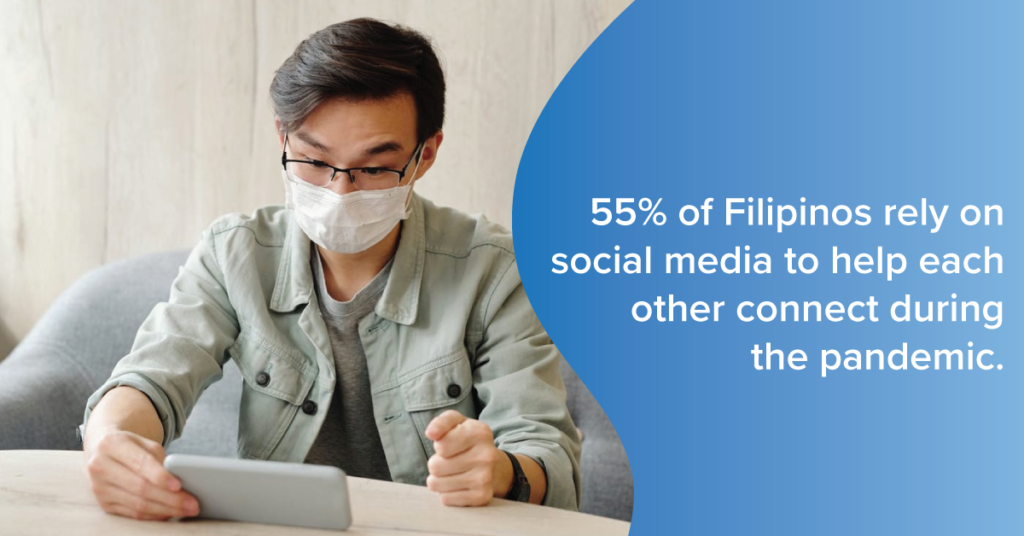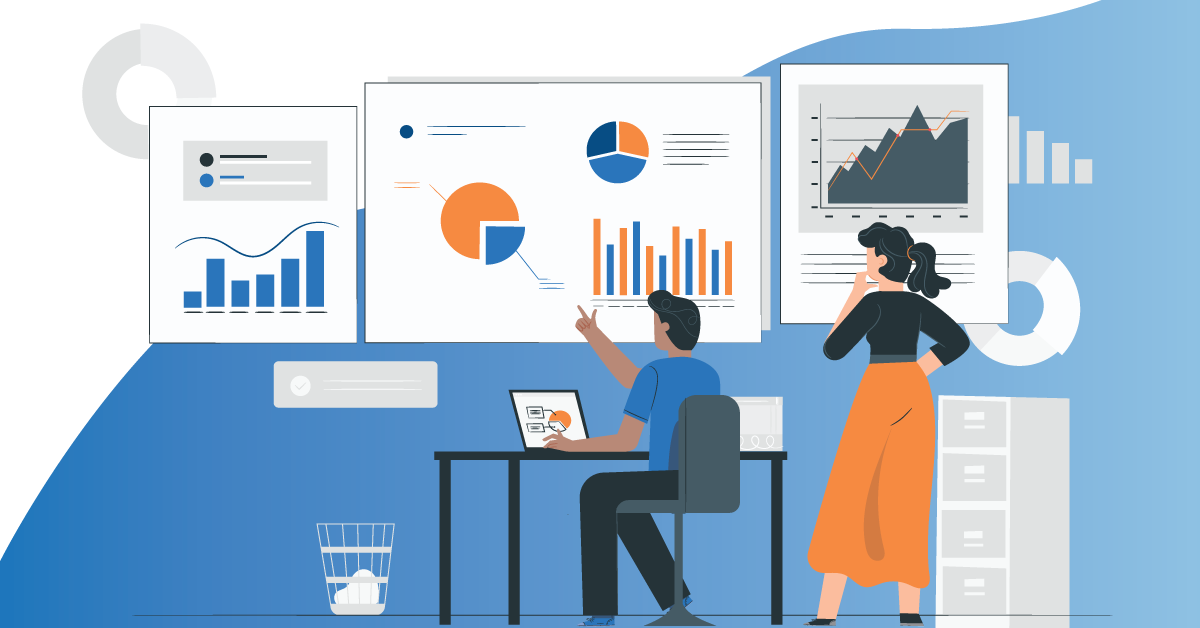We are all unanimous when it comes to how 2020 is one of the worst years for business in the digital age. We can only shudder to think about how companies that do not have any effective data-driven marketing in place when the pandemic struck, continue to struggle during these difficult times. The COVID-19 pandemic gave both small and huge companies everywhere either a paralyzing dose of the heebie-jeebies or a massive blow that left a number of them shuttered, furloughing employees, or looking for lifesavers that will keep themselves afloat.
In today’s new normal, digital transformation has never been used more as a by-word than when entrepreneurs first adapted it into their business models during the early ‘90s. That’s because the data-driven science and technology that comes with it are the few remaining alternatives for businesses that can help them achieve both B2B and B2C goals.
Proper digital marketing connects business owners with the right networks, helps them maintain the flow of supply for a sound operation, enables them to reach and retain wider audiences, and keeps their brands visible and prominent. All these, despite having to cope with social distancing measures and international lockdowns for most of the year.
But don’t get us wrong. It’s not as easy as simply creating a Facebook Business Page and posting beauty shots of what you’re selling with catchy captions for likes, shares, and those cute emojis 😉. Those are not enough to establish a substantial following, much more drive better sales. Even businesses that have long applied digital marketing strategies for years saw the need to adjust and address the challenges brought about by the current global crisis.
Undergoing Digital Transformation

For the many who previously haven’t settled in on the idea of digital transformation, transitioning has become essential during the pandemic in the hopes that they could still rebound from their losses and use online technology to drive solutions.
Time and again, data-driven marketing has undoubtedly played an important role in penetrating every aspect of a businesses’ marketing funnel via customer management systems software (CRM), from creating awareness to gaining conversions.
With online communication being the most prevalent alternative in reaching out to people these days, more entrepreneurs have found digital marketing’s potential to sustain business growth, be on track with their annual targets, or even surpass it.
That leaves us to one big question: How can you maximize digital ROI growth in the new normal when most of your competitors are also pursuing the same?
If you’re a business that’s struggling to accelerate its digital transformation, these insights will surely help you get your mind around just how it can help you weather this COVID-19 storm and come out with rainbows and sunshine on your ROI sheet.
Know Your Opportunities

All over the world, the top social media channels with the most number of users include Facebook, Instagram, Twitter, and Linkedin. Let’s take a closer look at what these social media platforms can offer your business and what other benefits they can give you for the long-term.
In terms of digital opportunities, we’ve listed down the following tips and insights that can help you optimize your ROI goals through data-driven marketing:
Aim for social media audiences
Any good digital marketer knows that the heart of most of these strategies springs from social media. It is where people from all walks of life (whether those with too much time on their hands or the busy bees) congregate, exchange ideas, and offer feedback. Even more so today when 55% of Filipinos rely on social media to help each other connect during the pandemic.
To simply put it, social media management allows you to establish virtual communities that are willing to talk about your brand and products on a public scale. So, just imagine how many people you could reach right now!

Proper social media marketing also allows you to create a good mix of target audiences (from direct to lookalikes), and gather useful insights that help improve your content management strategies and hook more online users to your sites. And, (as best pals would tell their dumped buddies), there are indeed plenty of fish in the sea when you do some great digital marketing.
Of the nearly five billion people all over the world who go online, 3.96 billion are active on social media, making it the top-of-mind marketing tool for most businesses today. At the homefront, 79 million Pinoys go online daily with over 90% of them or 73 million registered on many of our favorite platforms.
Learn about data-driven marketing
According to digital marketing guru, author, thought leader, and entrepreneur Neil Patel when talking about data-driven marketing strategies: “Not all methods work and some are a huge waste of time. Follow what the data tells you”.
And we couldn’t agree more.
By using data and analytics that are made available either by 3rd party-providers or via social media tools, segmenting your audiences by assigning them into their corresponding buyer personas and creating tailor-fit B2B and B2C marketing funnels can greatly improve engagement, remarketing (for audiences who have previously shown interest in your brand but still needs a little nudge), and achieve increased conversions.
Amazon mastered this art in digital marketing by using metrics and data gathered from users’ browsing history to understand its customers and recommend the right products. Plus, you can do the same and enjoy a 360-degree buyer persona for your customers in the process.
Focus on customer service

When COVID-19 struck the US, more than 40% of the country’s consumers who were forced to shelter in place resorted to go online, order and pay for what they needed, and either pick up the items from brick and mortar stores or have them delivered to their homes. This process, which many soon found to be safer and complies with social distancing measures, was dubbed BOPIS or ‘buy online, pick up in-store’.
The lesson here is that by putting the needs of the consumers first, businesses feel more enabled to deal with the increasing demand, simply by being creative with alternative solutions (the same way we all love Macgyver, right?).
However, focusing on your customers not only means addressing their pain points but also being transparent with them when you need their support and understanding. Letting them know your current capacity during the crisis allows you to manage their expectations and deliver real results.
BOPIS is one such online community success that was born out of digital marketing solutions for everyone’s benefit— from business owners, partners, consumers, and employees. In fact, it looks like this e-commerce solution is going to stay for a long time even after the pandemic as more consumers have already discovered its convenience, faster services, and more access to discounts and coupons (not to mention doing away with queuing in long lines).
Perform account-based marketing
The marriage of sales and marketing has also transcended into the digital realm of business in the form of account-based marketing or ABM. Loosely defined, it is a B2B strategy wherein customized communication and engagement tactics are used to foster stronger relationships with decision-makers and influencers.
Identity resolution provider LiveRamp used the same in landing an audience comprising Fortune 500 companies by complementing their strategies with automation, personalized customer ads, and effective messaging, among others.
What’s best about ABM is that it’s cost-efficient in the way that digital marketing assumes certain functions of the sales team so that the latter can focus on larger leads and drive increased conversions, while the former concentrates on more personal methods that build genuine customer relationships.
But it’s important that ABM marketers need to closely work with sales here and support the sales cycles within target accounts. This is where digital marketing can draw up tailor-fit customer journeys for these accounts that can include virtual experiential marketing, through leadership placements, outbound calling, email marketing, etc. (we’ll get into that soon).
Meanwhile, when ABM is performed, business owners acquire the potential to increase sales via multi-purchases, upselling, or cross-selling that all lead to higher margins and stronger partnerships for the long term.
Create great customer journeys

One of the most effective formulas that small business owners take for effective customer journeys in digital marketing is the Hero’s Journey. It is usually in the form of compelling videos, carousel ads, or simple posts that builds an online audience through engaging storytelling.
This proves that effective content planning is very essential to create awareness among audiences via new adventures, new ideas, and guiding them through a transformation that can give them valuable insights or solutions to their pain points.
But a customer’s journey doesn’t end in content planning. Providing both B2B and B2C audiences with sales and technical support that allow them to self-serve improves your branding, customer recall, and loyalty. These should come in segments or tiers according to which part of the marketing funnel your customers belong so that you can effectively guide them to the next phases of their journey.
The most common quality assignments for tiered customers include top attention for main customers and ample support for both similar audiences and those that need some remarketing. Making all these features available on your platform helps your target market plot their own customer journeys via awareness, support, and purchase options.
Let your brand stand out
Regardless of how small your business is, it’s imperative (especially these days), to make your brand have that imposing recall and personality online. However, most commit the mistake of going all out with their design elements and push the envelope way too far that in the end, no one gets the brand’s message.
If you are a new business, start simple. Keep your content relatable and avoid alienating your audience.
Identify the right channels where you’ll post your content to increase your leads. Again, this brings us back to the importance of data and marketing trends. Making your brand stand out can be as simple as being relatable to your audiences and helping them out with their needs by understanding where they are coming from.
Most of today’s favorite brands are also seen by their audiences as socially responsible companies and that’s not surprising at all. Millennials make up the largest slice of the global workforce today and their purchasing habits have long been channeled online. Aside from preferring online transactions more than in-store purchases, both Millennials and the rising Gen Z consumer populations also prefer brands that implement social responsibility, considering it as an ethos that influences how they live, work, and consume.
Another way to make a brand stand out is by offering promotions or value-added services more audiences can enjoy if they make bigger purchases online. Creating such signature features can give you both insight on delivery efficiency and an advantage over the competition.
Streamline traditional processes through automation
More businesses were saved from shuttering by the many available software that allows the automation of tasks and integration of operational tools for lesser times during the pandemic. Such fintech features as e-wallets, for example, gives you better security, faster transactions, while also allowing users to manage their money with the use of their smartphones. In one study, 48% of consumers aged 18-34 found the use of mobile wallets helpful.
In terms of digital marketing, setting up a thorough analytics software that can give you insights from your website and social media accounts can greatly improve your email strategies, audience identification, and sales tracking. This is why riding the tech wave isn’t such a bad idea after all costs are considered. Automation streamlines the work process, provides convenience for customers, as well as the right tools for you to troubleshoot your operations.

What we’ve learned throughout all of this is that any type of business can still recover and thrive even after the COVID-19 crisis given the proper capital. All one needs is to work with an efficient digital marketing partner that can understand the business inside out and establish the essentials that will help companies achieve their ROI goals.
In the country, Eight Media is a team of digital transformation enablers, that has helped multiple local and global brands achieve increases in revenue and leads at significantly lower costs. Learn more about their topnotch digital marketing services now to gain more mileage for your business during the new normal and beyond.





